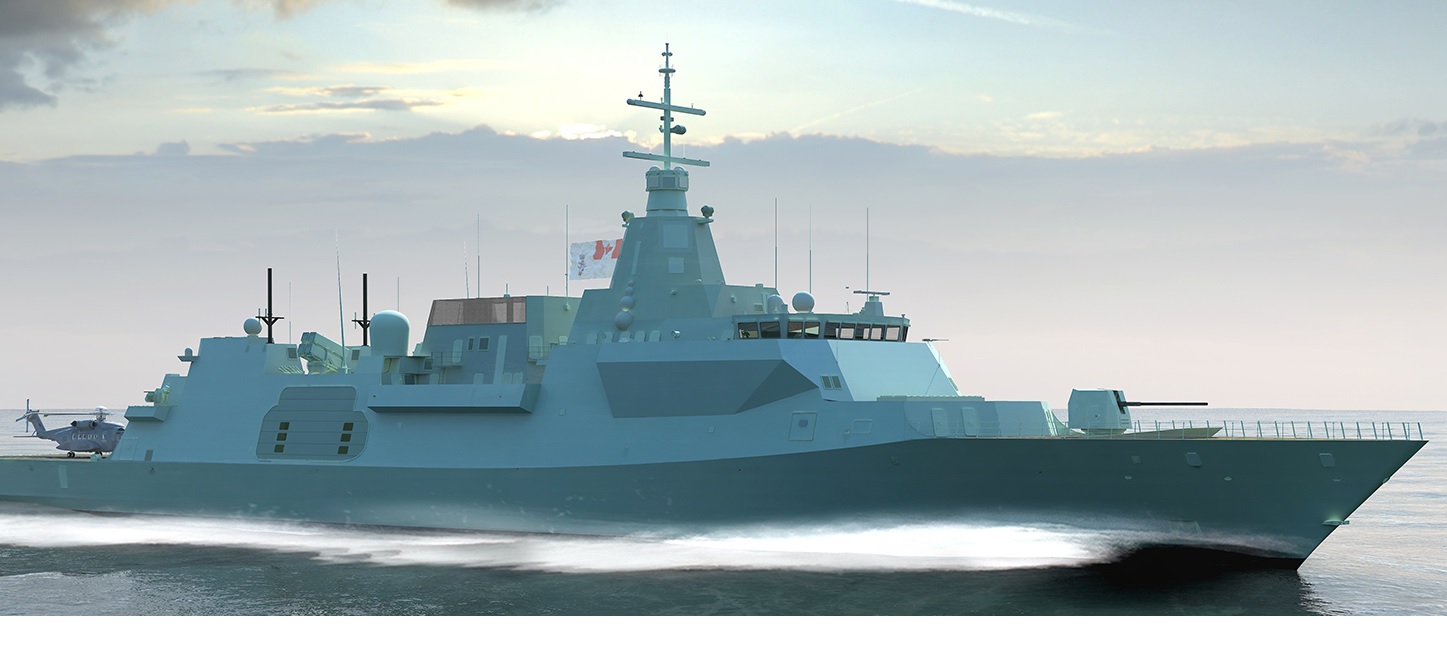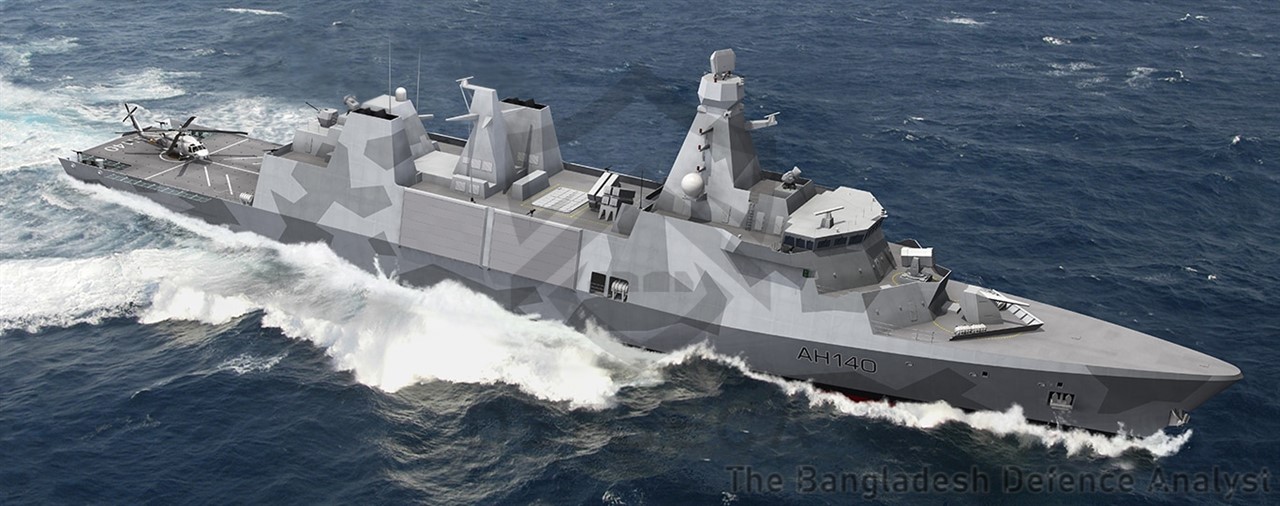The Bangladesh Foreign Minister Dr AK Momen announced the Bangladesh Navy will procure 5 ‘warships’ from the United Kingdom. He did not specify the type of warship, however, it is now widely assumed he is referring to capital ships such as frigates, though controversy is there on the number as Bangladesh Navy outlined a requirement for 6 frigate hulls to be built at CDDL with the cooperation of a foreign partner.
On 30 June 2021, it was reported that Babcock was in discussions with Greece, Indonesia, Poland and two other countries about potential Type 31 contracts. This list of countries is now believed to include Bangladesh too.
The potential G2G deal with the United Kingdom will focus on:
- Upgradation of CDDL
- Construction of second drydock at CDDL
- Construction of three warships (possibly frigates) in the UK or off-the-shelf Type 23 (Duke class) on offer
- Construction of two warships (possibly frigates) at CDDL (Arrowhead 140 mod./Type 31)
Bangladesh Navy has an immediate requirement for five hulls as replacements.
- 1 x Bangabandhu class – Can be kept in service for 10 more years as MLU is underway.
- 2 x Jiangwei II class – Can be kept in service for 10 more years, MLU completed in China prior to delivery.
- 2 x Jianghu IV class – Must be replaced with new hulls.
- 2 x Hamilton class – To be transferred to Bangladesh Coast Guard.
- 1 x Jianghu II class – Decommissioned already (BNS Osman).
As explained the Bangladesh Navy will require 5 frigates just to replace aged hulls, so in terms of sheer numbers, Bangladesh Navy will still have 8 frigates in the fleet, unless it signs another deal to purchase or build 6 more frigates locally. In any case, we don’t see this happening by 2030 unless of course, Khulna Shipyard’s second site becomes operational.
Now that the numbers are sorted, let us discuss the capabilities if we take Arrowhead 140 FFG as a reference baseline:
- Truly multi-role frigate with surface, air and anti-submarine warfare capabilities along with EW and Special Forces mission-enabled capabilities.
- Extends deep sea surveillance and SAR capabilities
- Each frigate costs $336 million excluding major weapons and sensors. Price will be increased by 30% once these systems are factored so we expect the price per unit to be no less than $440 million per unit.
- Unlike previous generation frigates of the Bangladesh Navy, the Type 31 or Arrowhead 140 frigate is optimised with a multi-mission capability which further reduces operational cost and ability to operate in adverse environmental conditions anywhere around the world.
- The Arrowhead 140 is based on the industry-proven Iver Huitfeldt hull form, which is currently in service with the Royal Danish Navy.
- The frigate will have a maximum overall length of 138.7m, a maximum beam of 19.8m and a design draft of 4.8m.
- The displacement of the vessel will be 5,700t, which is 2,000t more when compared to the similar general-purpose frigate offerings in the market.
- Designed to carry more than 160 people, the ship can operate with a minimal crew of 100.
- The large aft flight deck can accommodate an AW-101 Merlin or MH-60 Seahawk helicopter or a smaller rotorcraft such as AW159 Wildcat plus unmanned aerial vehicles (UAVs).
- Equipped with helicopter in-flight refueling (HIFR) capability, the deck can support the operation of aircraft with a maximum take-off weight of up to 15t.
- The hangar on-board the frigate will have the capacity to hold naval helicopters, unmanned systems and light aircraft.
- Either side of the hull will feature two boat bays for the deployment of rigid-hulled inflatable boats (RHIB) and autonomous underwater / surface systems.
- The vessel will also feature a range of reconfigurable spaces to carry a large number of twenty-foot equivalent (TEU) containers, which will serve as storage spaces during Humanitarian Aid and Disaster Relief Operations (HADRO) missions and can also be used for accommodating additional people.
- The upper deck will be installed with gun mounts to house 40mm small calibre guns to 5in (127mm) medium calibre guns.
- The large deck area can accommodate eight canister-launched surface-to-surface guided weapons (SSGW). It can also accommodate the Mk41 vertical launching system (VLS) with up to 32 variable length tubes.
- The vessel will carry surface-to-air missiles (SAM), land strike missiles, anti-submarine warfare (ASW) missiles and close-in weapon systems.
- The frigate will utilise the Thales tactical information and command system (TACTICOS), which is an open architecture combat management system that enhances the warfare capability of the forces. The TACTICOS is already fitted on BNS Bangabandhu.
- It will accommodate a range of sensors, including short and medium-range radars for navigation, fire control, helicopter control, and situational awareness of the crew. Surveillance and gunfire control can be provided by electro-optical trackers on-board.
- The vessel will be equipped with a hull-mounted sonar for identification of submarines, torpedoes and underwater mines. It will feature a towed array or variable depth sonar for protection against torpedo systems.
- The frigate will feature a combined diesel and diesel (CODAD) propulsion system, integrating four diesel engines, two propellers and two variable shaft lines. The power-plant will have the capacity to produce a maximum power of 32.8MW.
- The propulsion system will ensure a low underwater radiated noise (URN) signature and will comply with the International Maritime Organisation (IMO) Tier III regulations. It will enable the vessel to attain a cruising speed of 18kt and a maximum speed of over 28kt.
The Bangladesh Navy also requires 6 Offshore Patrol Vessels (OPV). Currently it uses 5 Island class OPVs, another ship, BNS Shaheed Ruhul Amin (A511), primarily used for training role was decommissioned on 16 June 2020 and is to be replaced by a purpose built training ship of local manufacture.
The United Kingdom, through the Royal Navy supplied the Bangladesh Navy with its first three frigates (including Salisbury class- HMS Llandaff, and Leopard class- HMS Lynx and HMS Jaguar). Prior to that the Chattogram region supplied the Royal Navy with frigates for hundreds of years, including some frigates that participated in the famous Battle of Trafalgar in 1805.
The Bangladesh Foreign Minister Dr AK Momen announced the Bangladesh Navy will procure 5 ‘warships’ from the United Kingdom. He did not specify the type

www.defseca.com











